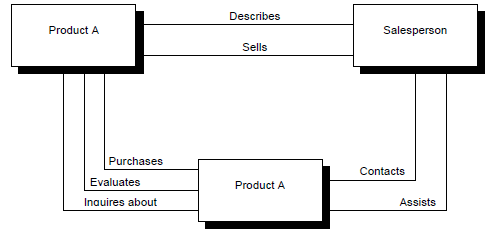Business-Level Data Modelling
The Business-level data modelling is an endeavour modelling activity which focuses on the data objects that is also called entities which are needed to achieve the business functions. On the business level typical data objects include process and consumers of information example for a customer, things example for a report, occurrences of events example for a sales conference, company units example for sales and marketing, places example for manufacturing cell, or information structures example for an employee file. A data object contains a group of attributes which describe some quality, aspect, characteristic or descriptor of the data which is being defined.
Example for during enterprise modelling an information engineer may define the data object customer. For more fully describe customer the following attributes are defined that are given below:
Object: Customer
Attributes:
Name
Company name
purchase and Job classification authority Business address and contact information Product interest(s)
Past purchase(s) Date of last contact
Status of contact

Figure - Depicting relationship among business level data objects.
Once a group of data objects is described, their relationships are recognized. A relationship indicates how objects are connected to each other. For an example let consider the objects customer product B and salesperson. An information engineer builds a diagram in figure 13.2 to depict these relationships. By referring to the figure relationships imply a connection among data objects. In common, relationships can be read in either direction hence a customer purchase products B and product B is purchased through a customer. In real additional information is provided as element of the data model.
The culmination of the ISP activity is the creation of a series of cross-reference matrices which develop the overall relationships among the company and its business areas, business goals and objective business functions and data objects. The Examples of these types of matrices are shown in figure.